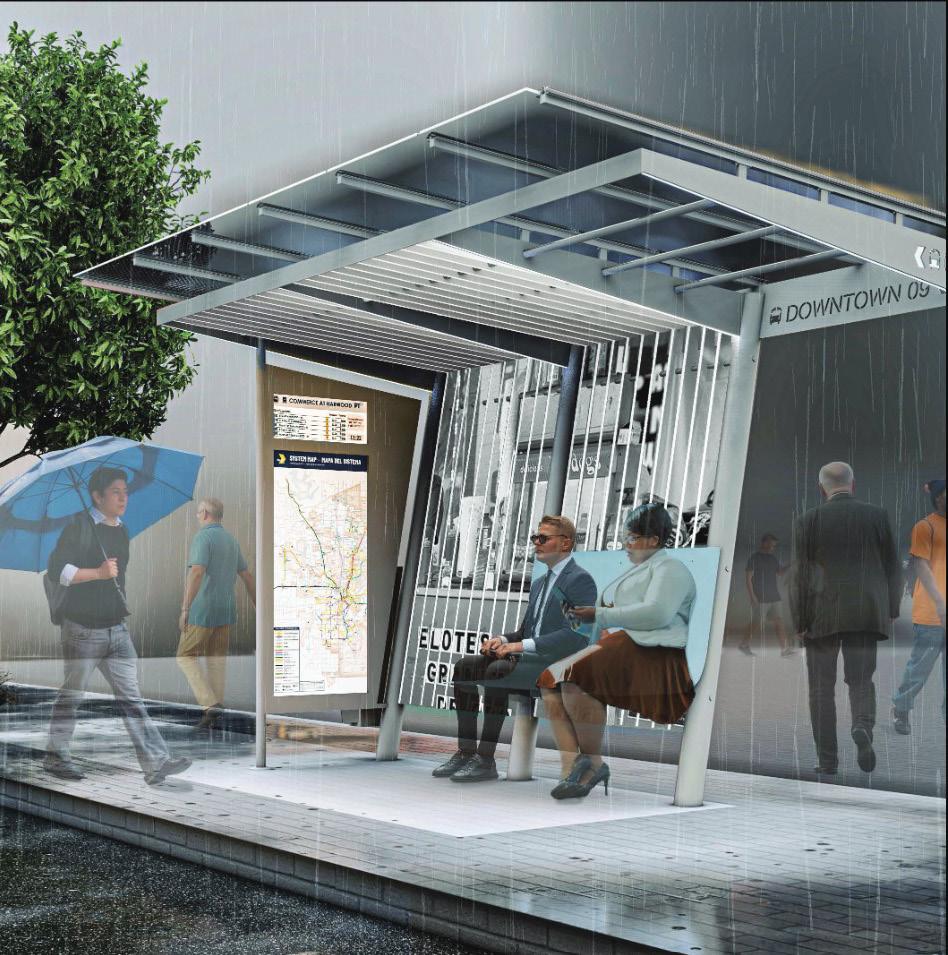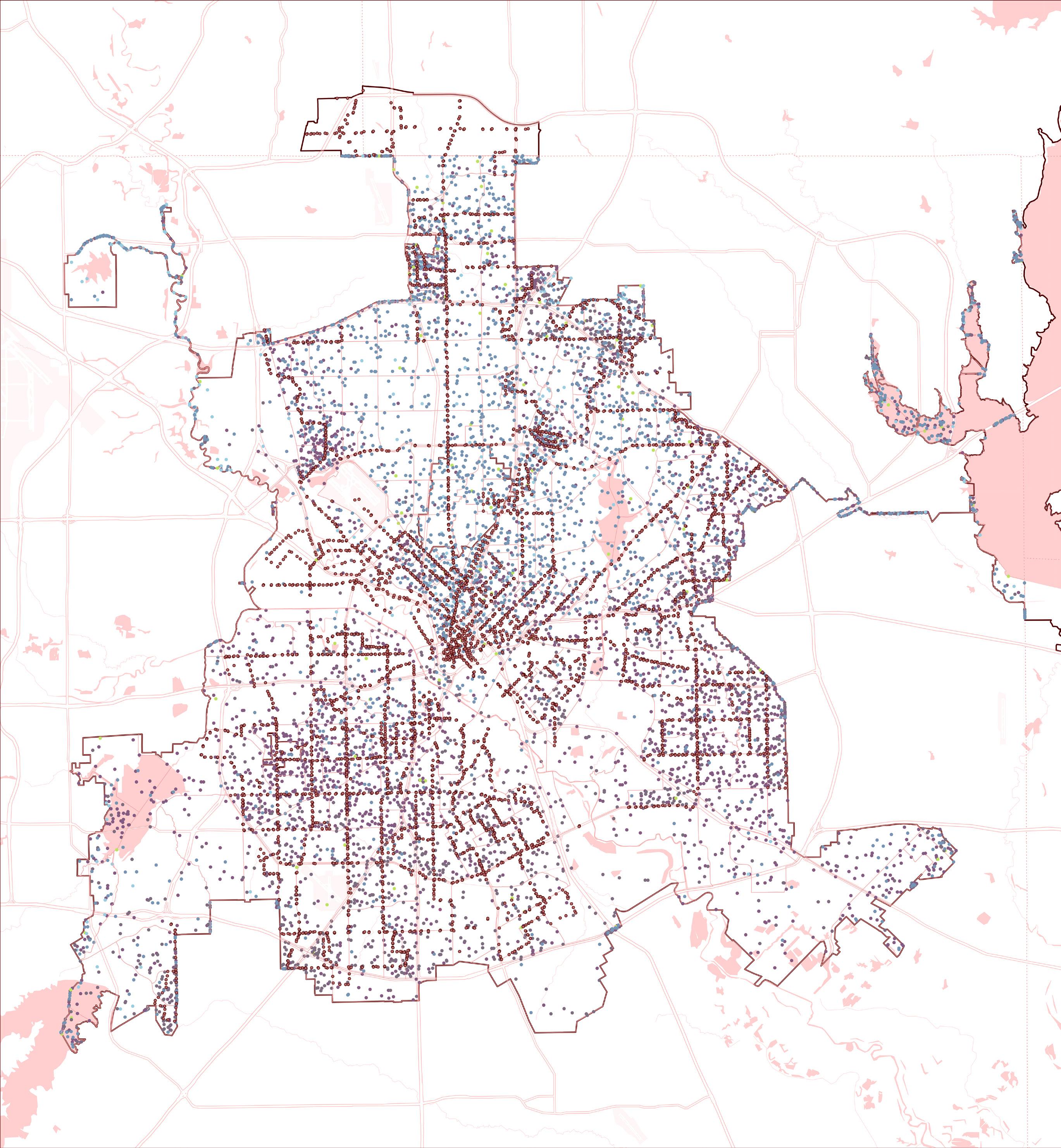
2 minute read
Demographics
DART is strategically positioned to serve the area’s growing population, in particular its low-income residents and people of color. Research shows these populations use buses more frequently than more affluent White people (Research Gate, 2015). In Dallas, 34% of Blacks, 27% of Hispanics, and 14% of White residents report utilizing public transportation weekly.
DART works to benefit the region by providing a sustainable system of innovative, affordable, reliable and safe mobility options for riders enhanceing the quality of life and stimulates economic development. In 2021, DART bus ridership totaled 20.1 million people being served by 6,878 bus stops across the region. The majority of DART riders are reliant commuters who use public transit to get to and from work. It is predicted that by 2045, the North Texas region will expand to accommodate 4 million new residents and 2.2 million new jobs (Dallas Morning News, 2022).
Advertisement
Pavilion Study
We analyzed themes on Durability, Context, Safety, and Experience.
Site Visit Analysis
We took divergent paths on the course of dart, engaging in interviews with numerous dart riders.
Bus Shelter Study
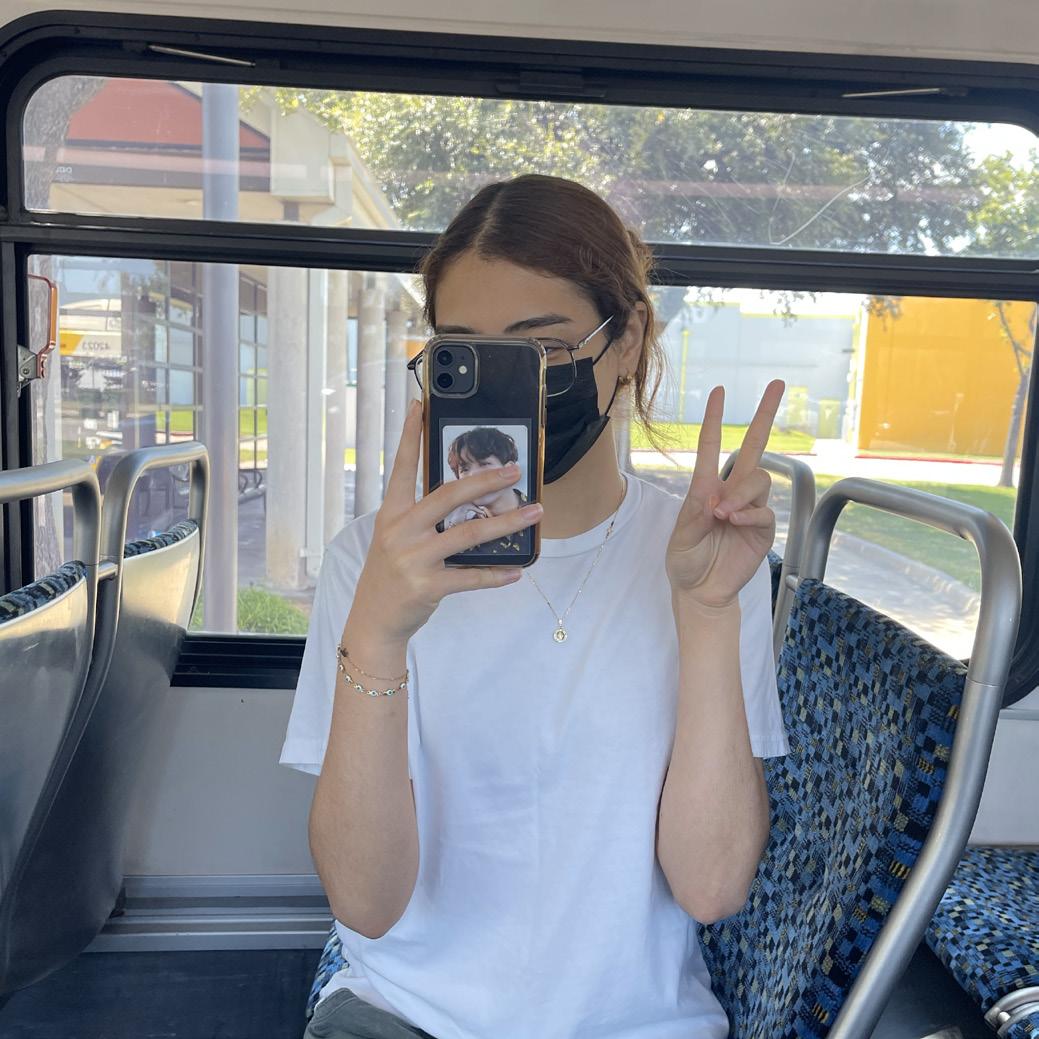
We examined the existing bus shelters thoroughly and documented their current specifications through sketching.
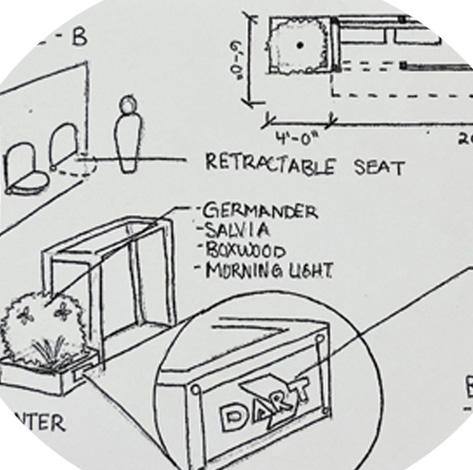
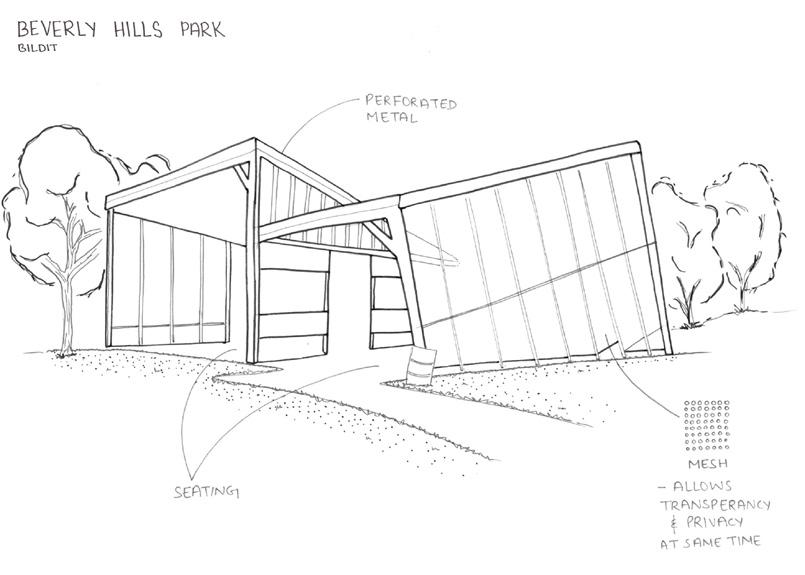
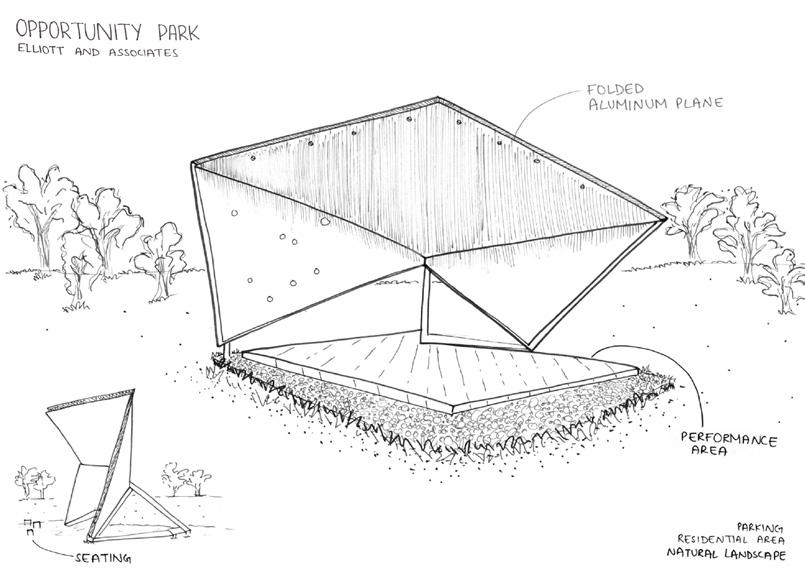

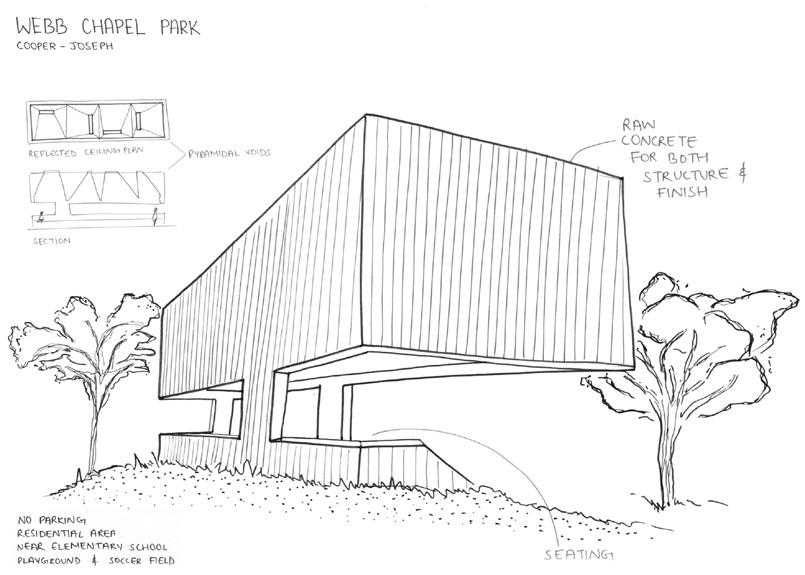
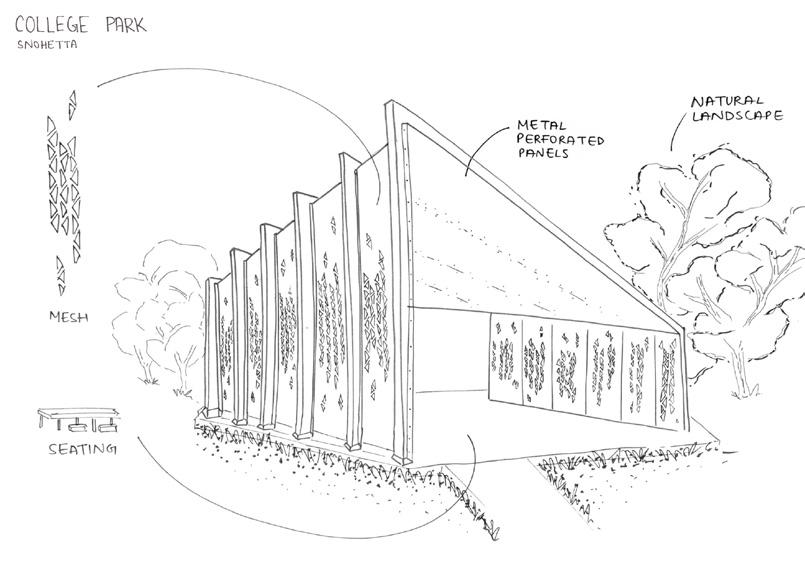
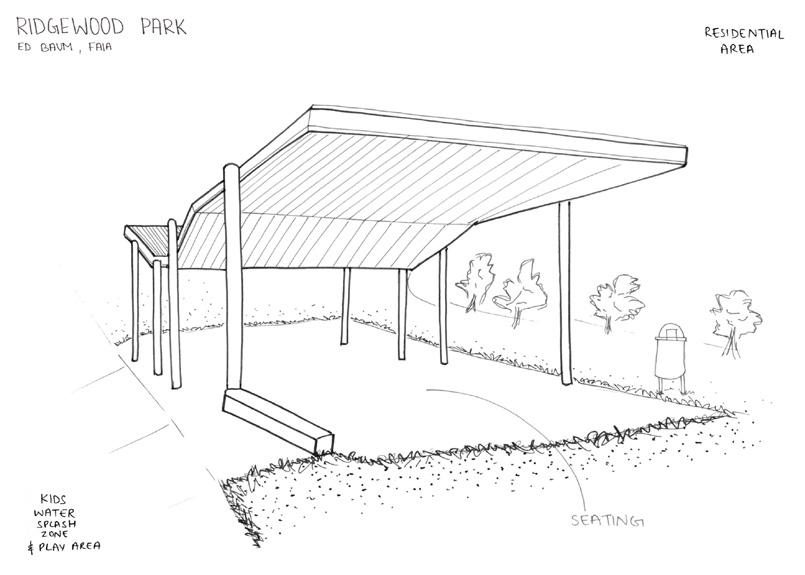

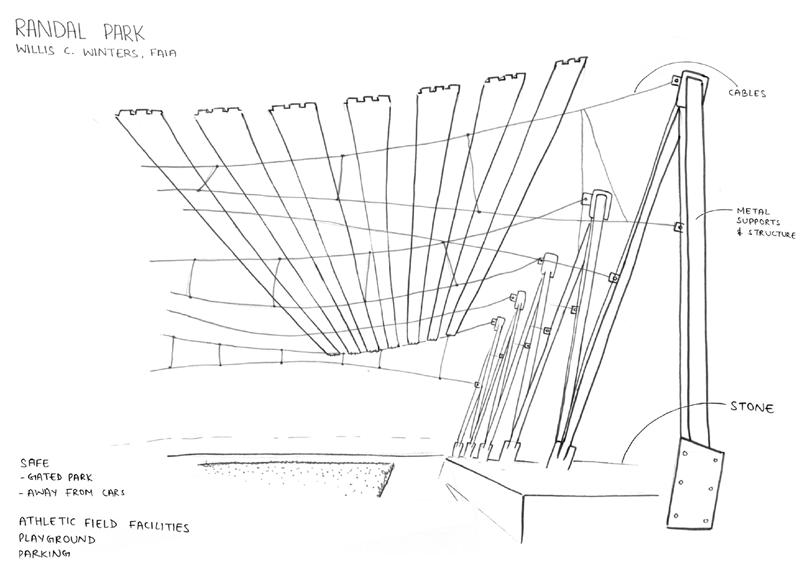
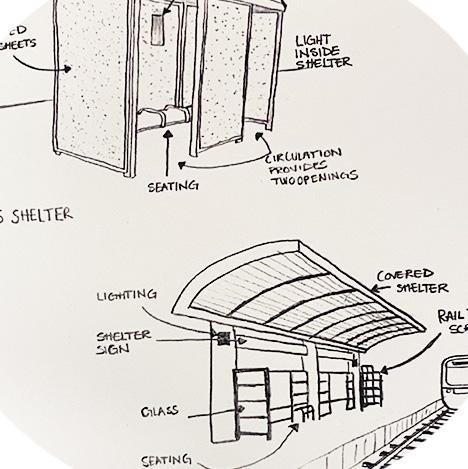
Preliminary Individual Design
Following our comprehensive analysis, each of us individually embarked on envisioning the features and appearance of a next-generation bus shelter before coming together as a class.
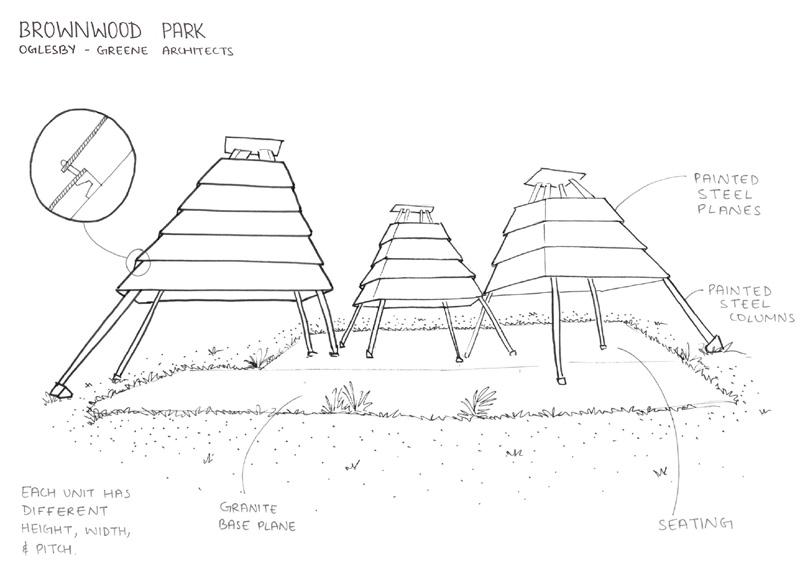
Iteration One
The initial design concept for the bus shelter aimed to create an abstract and innovative structure.
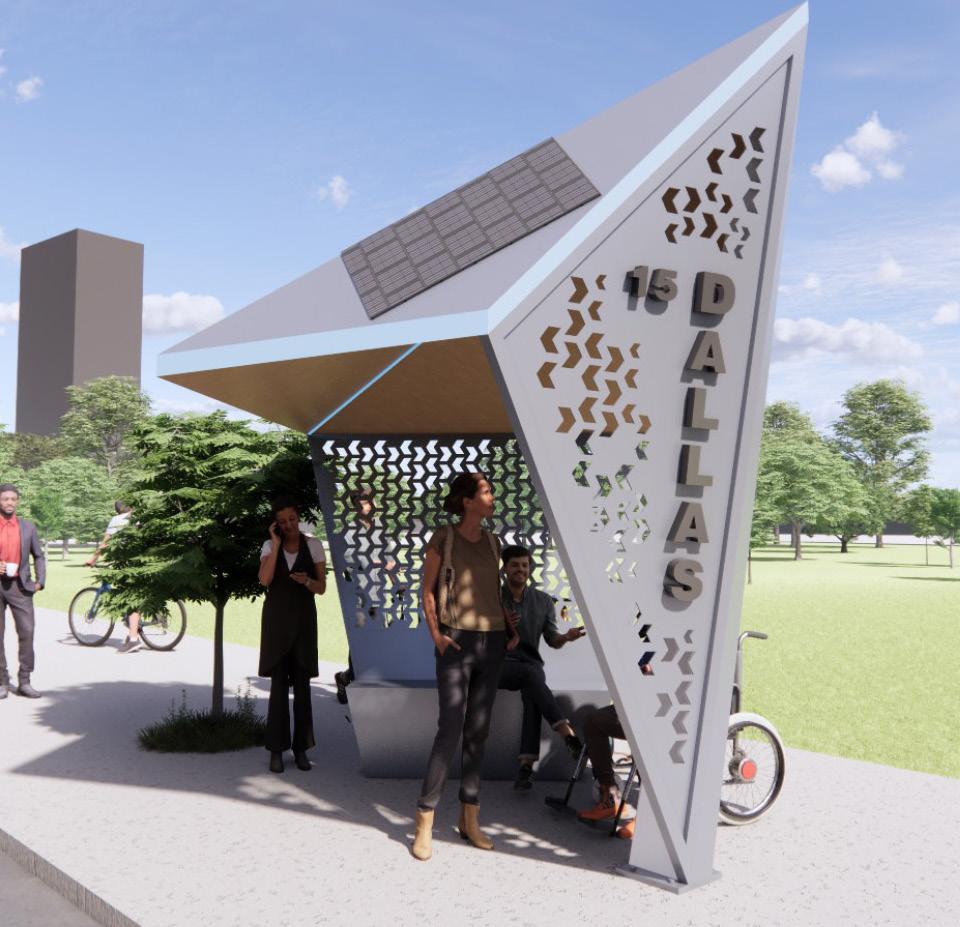
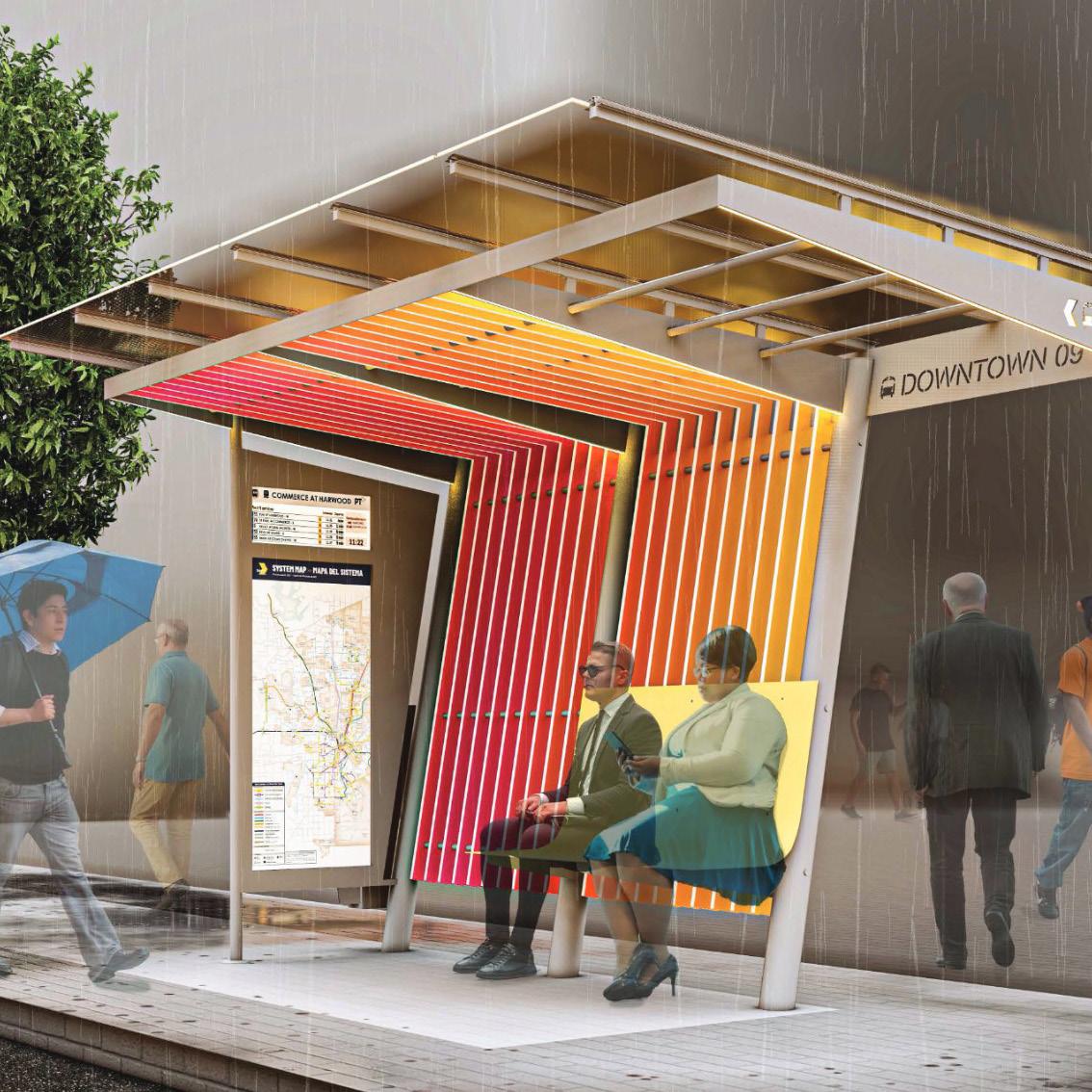
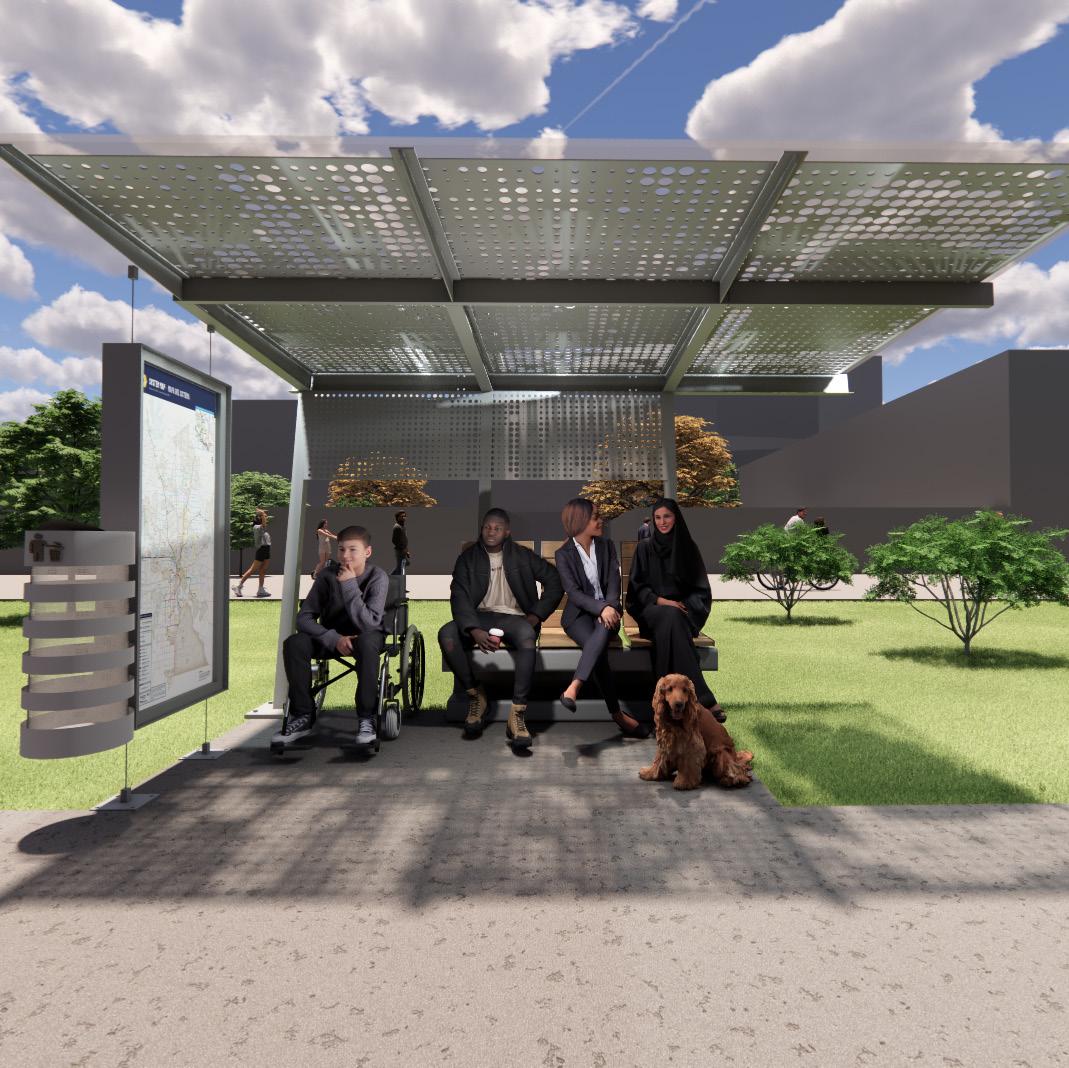
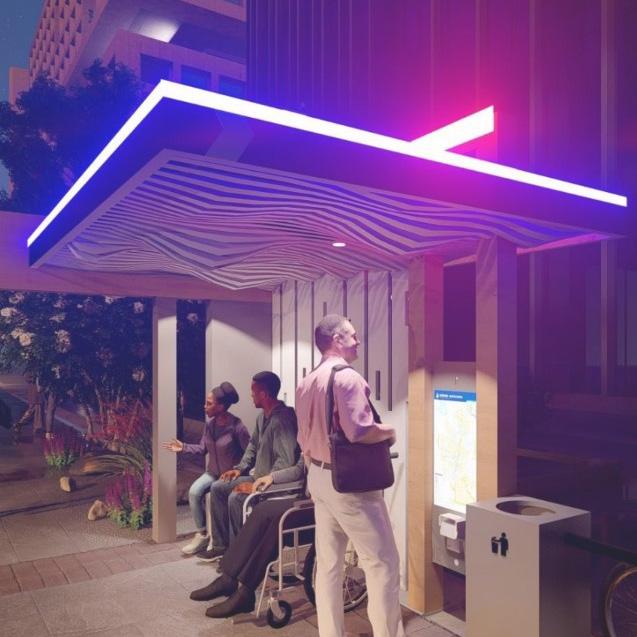
Iteration Three
The third iteration maintained the simplicity of the design from the second iteration, but with a focus on modularity and lightweight structural elements. Additionally, the incorporation of screening elements allowed for an artistic touch within the design concept.
Iteration Two
In the second iteration, the design approach shifted towards a simpler aesthetic while still incorporating elements that retain an artistic quality.
Final Design
Taking into consideration the insights gained from the previous iterations, the final design focused on refining the functional screening elements and enhancing the structural connections. The emphasis was placed on the meticulous detailing of these elements to ensure optimal functionality and a seamless integration of the overall structure.
Local Art Strategy
Having local art in a bus shelter can provide several benefits to the community and enhance the overall experience of using public transportation.
For the upcoming generation of DART bus shelters, it is essential to incorporate and showcase local art as an integral part of their construction. Collaborating with initiatives such as the City of Dallas Public Art Program or BIG Thought, the aim is to engage local artists and community members in the creation of unique artworks that reflect and celebrate the culture of each neighborhood. By transforming bus stops into public gallery spaces, the shelters become vibrant expressions of the communities they serve, fostering a sense of belonging and pride.

This collaborative approach nurtures neighborhood ownership, strengthening the bond between residents and their surroundings. The integration of local art into bus stop design not only enhances the visual aesthetics but also fosters cultural engagement and appreciation among commuters. As people wait for their buses, they are immersed in an environment that represents the rich diversity and creativity of their neighborhood.
The inclusion of art in bus shelter construction creates a harmonious integration of functionality and cultural expression, elevating the commuting experience and fostering a stronger sense of community identity.
